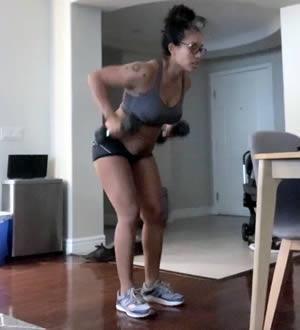Squats During Pregnancy - What's the Story?
Squats are a movement we do in our everyday lives, whether it’s lifting a basket of laundry off the ground, picking a baby up off of their floor play mat, or bracing to lift a heavy bag of pet food. If an individual has no other limitations, start squatting early in pregnancy and continue into labor. We think of it as a strengthening exercise, but it is also a great stretch for relaxing pelvic floor muscles, which is necessary to allow an infant to get through the birth canal. The squat position is likely what most females have used throughout history for vaginal birth. The “lithotomy” (or laying down) position for vaginal birth has been a recent change with modern techniques in anesthesia.
Can I do Full Squats When Pregnant?
100% yes full squats can be done when pregnant unless otherwise advised not to by a doctor in the presence of complicated pregnancy. The ability to sit into the squat position widens the bony pelvis and relaxes the pelvic floor muscles. This is necessary in order to permit an efficient vaginal birth. The more that this can be practiced in pregnancy, the more likely a birthing parent will be able to perform this while dealing with labor pains. Many women instinctively get into a squat-like position during vaginal birth, which I always found fascinating when I was delivering babies for women without anesthesia.
Here’s how to start deepening your squat: hold onto a pole, end of a wall, or railing with both hands, then sit back as if sitting into a chair. The goal is to access the full squat position, where the entire weight is in the mid- to back of the foot, the spine is neutral, and hips are below parallel. This also requires the knees to come forward, as well as ankle/calf flexibility and core stability in order to maintain a neutral spine. In addition, with a pregnant belly you may notice that your feet may need to be slightly wider or angled out more in order to make room for the growing baby.
How long should I do squats to induce labor
Funny enough, I went into labor mid-squat during a workout exactly one day before my due date! My daughter, my first birth, was born on her due date, which is not typical though I like to think that squats helped. The American College of Obstetrics and Gynecology (ACOG) states that pregnancy is the perfect time to either start or continue a fitness routine. Squats are such a fundamental, functional movement to incorporate into all kinds of fitness. I recommend starting early in pregnancy and keep it as a regular movement. ACOG also recommends fitness guidelines consistent with non-pregnant individuals: 150 minutes per week, or 30 minutes of moderate exercise 5 days per week. “Air squats,” or squats without weight, are a great exercise. In addition, because the squat uses so many large muscle groups it’s also great to add weight with squats, even during pregnancy.







